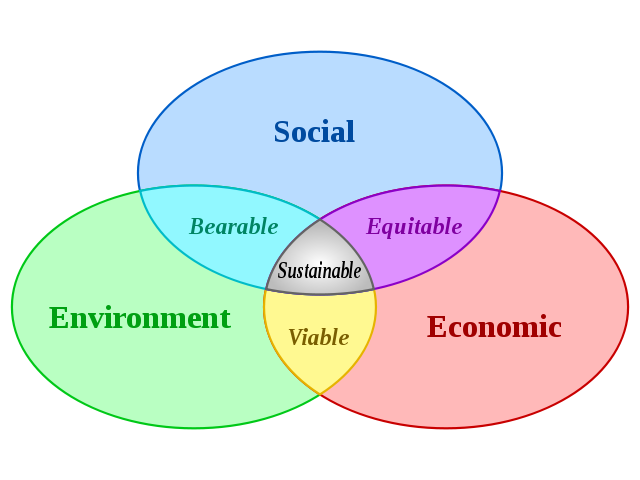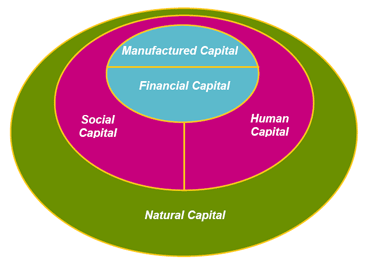How to determine project value
The PMBOK® Guide 5th Edition recognises the importance of organisations realising value from their investment in a project. But what exactly is ‘value’? The PMBOK® Guide (1.6) suggests value is a concept that is unique to each organisation and encompasses the total sum of all tangible and intangible ‘value elements’.
Determining the tangible elements is relatively straightforward and can easily be reduced to a financial return. More difficult, but often more important, is understanding the intangible value the project can create and identifying low cost options that have the potential to add significant intangible value for the organisation by creating favourable impressions or outcomes in the minds of stakeholders.
Three bottom lines
One element of total value is encapsulated in the concepts of sustainability and the ‘triple bottom line’. Sustainability has become increasingly important to organisations in recent years, and the word sustainability has changed its meaning significantly over time in the business world.
Originally, sustainability only referred to minimising your impact on the environment. Then in 1995 John Elkington introduced the idea of the ‘triple bottom line’ of ‘Profit/People/Planet’, suggesting that an organisation needs to be sustainable financially, socially and environmentally.
Five types of capital
More recently, the Forum for the Future expanded this concept by identifying five areas that contribute to the production of value by an organisation, called The Five Capitals of Sustainability. They are:
- Natural Capital. This represents the environmental and ecological resources that are needed to produce goods or deliver services. They include energy, water, fuels, raw materials and other natural resources, as well as the ecosystems from which these are taken.
- Human Capital. This is not just about individuals as resources, but it also covers their energy, health and wellbeing, knowledge and skills, motivations and emotions.
- Social Capital. This describes the way people interact in the various teams within organisations. It is also about how people relate through other networks, partnerships and less formal groupings.
- Manufactured Capital. This covers material goods and infrastructure used by an organisation to generate its products and services, but which are not part of the delivered output. It includes buildings, machines, tools, communications networks, IT systems etc.
- Financial Capital. These are assets that exist in currency form, including cash, shares, bonds and loans.
Each of these Five Capitals forms part of the value used by an organisation to generate its goods and services. The Forum for the Future believes that by maintaining and trying to increase stocks of these capital assets, we can live off the income without reducing the capital itself. The challenge is to use these different types of capital in ways that are wise, efficient, effective and sustainable.
Any one action or decision will not affect all of the elements of the ‘triple bottom line’ or the ‘Five Capitals’ but the right decisions or actions can build value in at least one of the dimensions, frequently two or more.
One simple example is the now almost universal practice of cutting small ‘viewing windows’ in construction site hoardings – the cost is minimal, the value is improved safety (people don’t need to stand near the gate to see what’s going on) plus the PR value of letting people see the actual progress of the work to help offset the inconvenience of noise and dust. And as a consequence, the construction company’s ‘brand image’ is enhanced.
The challenge is finding these valuable intangibles in your project, bearing in mind most of the value will be created in the minds of various stakeholders.
Awarding value
One useful tool to help achieve this and uncover the full value spectrum of you project is Edward de Bono’s ‘other’ thinking tool—the Six Value Medals™.
His ‘medals’ describe different types of value which are important to people and organisations, and against which we can perform a ‘value scan’ when making decisions or determining courses of action within the project. They offer an alternative view of what matters, and can help us uncover ‘value’ that we otherwise might overlook.
These are de Bono’s Six Value Medals:
- Gold Medal: Human values. Gold is precious, and so are people. This medal covers the things that matter directly to people, both positive and negative. These include pride, achievement, praise or humiliation, a sense of belonging or isolation, hope, trust, and growth.
- Silver Medal: Organisational values. This medal is about the purpose and mission of the organisation, and what matters to the overall business. It considers what will help or hinder us in pursuit of our goals. Examples might include profits, market share or brand image.
- Steel Medal: Quality values. Steel must be strong and it has to perform with certain characteristics if it is to fulfil its purpose. The steel medal considers effects on the quality or fitness for purpose of what we are doing, either positive or negative.
- Glass Medal: Creativity values. Glass is simple but has many creative uses. This medal considers impacts on our ability to innovate and change in order to do things in a new or improved way.
- Wood Medal: Ecology values. Wood points to the natural environment. The wood medal draws attention to the environment in the broadest sense, describing positive or negative effects of our decisions or actions on the world around us.
- Brass Medal: Perceptual values. Brass looks like gold but it is not. Perception matters and this medal asks whether there is any resulting change in the way we and others perceive or are perceived.
These six groups of values give us different perspectives on the things that may be important to organisations and stakeholders, both as groups and as individuals. By using de Bono’s Six Value Medals to define ‘what matters’, we can identify and assess the full spectrum of value, and prioritise actions to achieve the values that matter most, creating more value ‘bang’ for the investment.
Take a simple example: during the last organisational restructure the CEO’s new office fitout covered up a duct in the wall—your project has to rip the side wall out of her office to access the duct and upgrade the cabling. Where’s the extra value? Some possible ‘medal’ ideas include:
- Gold: An internal news item showing the CEO cooperating with the project despite the inconvenience (this can work for Brass as well).
- Wood: Make sure the duct is accessible in future without the need for demolition work.
- Glass: The repairs can be use to offer an opportunity to update the CEO’s office colour scheme, ask her what colours she would like.
There are probably other ‘medal’ possibilities as well; they would depend on the actual situation. By reframing our thinking, and using the ‘six value medals’ to identify new things we, or our stakeholders, care about, we can create extra value. Then the real work starts!
Having identified the best low cost, high value opportunities to add tangible or intangible value to your project, the ideas need to be put into action and the outcomes tracked through a benefits realisation system.
The author would like to acknowledge the original inspiration for this post, two Risk Doctor Briefings published in 2013, available on the Risk Doctor website.



